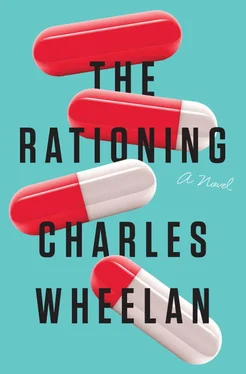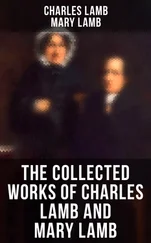One bottleneck to this massive scientific effort was bizarrely low-tech: access to dust mites. The North American dust mite was not endemic to most of Europe, Asia, or South America (as the name would suggest). Even in the U.S., there was no ready supplier of dust mites for laboratory work as there was for mice or rats. A cottage industry grew up almost immediately, with the people who had been previously afflicted by the small, itchy bites suddenly able to cash in on the nuisance. (Despite the very clear description of the North American dust mite on the NIH website, eager entrepreneurs showed up at regional laboratories bearing everything from red ants to cockroaches.) The Midwest turned out to be the place where dust mites could be gathered most easily for research purposes. As a result, we leaned heavily on teams at Northwestern, the University of Chicago, and several of the other Midwest universities.
We set up a “war room” in the NIH headquarters to be the central repository for the myriad decentralized research efforts. Almost immediately we realized that we were lacking even the most basic tools for sharing the information that was being generated. The normal scientific process involves peer review, publication in journals, and presentations at scientific conferences—all things that take months or years. Now we had hours. “We need a place where everyone working on pieces of this challenge can post their progress,” I explained to the Director. The NIH had internal sites where we posted this kind of information, but there was no way to grant security clearance to outsiders in a short amount of time (nor did we necessarily want teams of foreign scientists to have access to these sites).
“How much security do we need?” she asked.
“Not much,” I figured. “We don’t want anyone without access posting a lot of nonsense. Other than that, we just need a place to gather a lot of information.” Even as I spoke, I was thinking of an easy solution, but it seemed too silly to mention.
“I’m sure somebody from the NSA can set something up for us,” the Director suggested. “Or maybe we should call one of the big software companies.”
“It will take three hours just to get the right person on the phone,” I said. “Look, I think all we need here is a big Google Doc. We can invite people to join.”
The Director was scrolling through messages on her phone, trying to manage other problems as she dealt with mine. My suggestion caused her to stop and look at me. “A Google Doc?” she asked incredulously. “That’s what my daughter uses for eighth-grade projects.”
At that moment, like so many other moments during the Outbreak, I was tempted to blurt out the obvious: “If you’ve got a better idea…” In fact, there may still be a commercial market for some product in this spirit—maybe an iPhone app with an elegant-sounding British voice that says, “If you’ve got a better idea…” at the push of a button—because if I learned anything during this ordeal, it is that the world is full of people who are very good at criticizing any proposed course of action and far less skilled at offering practical alternatives. To her credit, the NIH Director was not normally a naysayer, and she came around quickly to my suggestion once she focused exclusively on our conversation. “Really?” she asked. “Do you think that would work?”
“Why not?” I said. The Director gave a small shrug of approval. With that, the world’s most intensive scientific effort since the Manhattan Project was launched on the same platform that the NIH Director’s daughter was using to collaborate with three classmates on their U.S. Constitution project. We posted our plan on the NIH website and invited researchers to request access to the document. The timing was not good, as it was now nearly midnight on the East Coast. I worried that we would lose precious time since few scientists would pick up the news until morning. Still, we granted access to the document to thirty-one researchers in the first half hour; by one-thirty a.m., there were one hundred and twelve: biologists, physicians, biochemists, epidemiologists, virologists, evolutionary biologists. Giscard became the self-appointed master of the document, like a disc jockey managing the flow of information. I must admit that he was really, really good at it. The flow of data, questions, and theories was overwhelming. Giscard stood in the middle of this surging river of information, constantly directing the effort back to the questions that mattered: Why did the indolent form of the virus have a different protein structure than the virulent form? How did it get that way? And, of course, the holy grail of this whole endeavor: How could we render the virulent form of the virus harmless in the absence of Dormigen?
Almost immediately, we had our first breakthrough. A team from Rockefeller University in New York explained how the benign form of the virus could lose a protein, rendering it virulent. The long, scientific explanation for that process (which they would subsequently publish) involves changes that take place in a cell as it replicates (divides); namely, that parts of the cell break down after repeated replication. (This is the reason living creatures grow old and die; their cells degrade as they divide over time.) The shorter, more accessible answer to how the benign form of the virus could lose a protein is comically simple: it eventually falls off, “like a button on some pants that go through the washing machine over and over,” as Giscard would explain to his social media followers.
There was euphoria in our war room as we celebrated this discovery—and the speed with which it happened. We were painfully aware of how little time we had left. The Army had provided us with a small logistical team that was offering guidance on everything from how long it would take to mass-produce a new vaccine (long) to what would be the best way to distribute such a vaccine around the country (UPS and FedEx). At every turn, the Army logistics experts told us things would take longer than we expected. Still, it was the middle of the night and we had just unlocked one of the key mysteries of Capellaviridae , which would in turn fuel insights by the other teams.
“Beautiful work, everyone,” Giscard exclaimed to the room. I admired his confidence and extroversion. We are going to figure this thing out , I thought.
It was right about then that the French film crew arrived. I heard the NIH Director’s voice before I knew what was happening. “You have got to be fucking kidding me,” she yelled from somewhere outside the war room. The film crew was waiting down in the lobby: two camera operators, a producer, and a technician, all from a famous French news program.
Giscard, alerted to their arrival, stood up in the war room and said loudly, “We are in history!” A film crew was the last thing we needed in our cramped, hot, frenetic war room. Giscard had invited them, of course, with no approval from anyone. As obnoxious as that was, it was becoming increasingly apparent that we were participating in something historic. The next major discovery came around three in the morning, just after the start of business in Europe. A team from the Munich Institute for Tropical Diseases confirmed that Capellaviridae had indeed evolved from the influenza virus. Using DNA analysis, they discerned that Capellaviridae was a near-exact match for a flu virus that had infected Native Americans roughly nine thousand years ago. The German team found one other interesting thing: the benign form of Capellaviridae resembled a flu virus that had been neutralized by human antibodies. Less than an hour later, a team of evolutionary biologists offered an elegant explanation: The North American dust mite transmitted the flu virus to its ancient human hosts along with antibodies to neutralize it. “The North American dust mite evolved into the earliest known flu shot, thus bestowing an evolutionary advantage on the human populations where it was endemic,” the lead Stanford scientist wrote on our Google Doc.
Читать дальше












